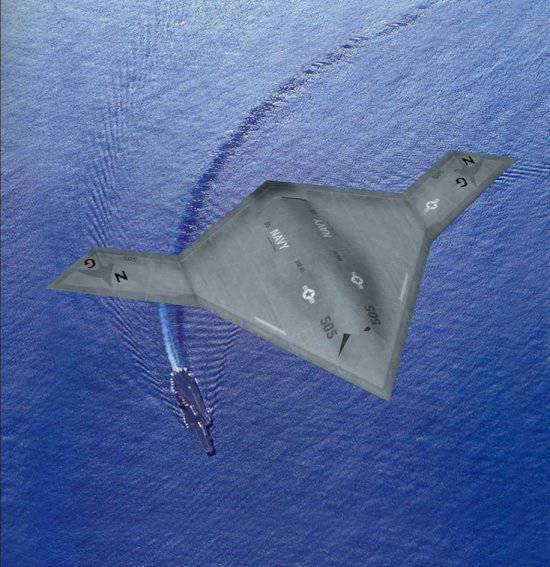US creates combat drones for sea battles
The Pentagon has signed a contract with AAI to develop a complex of on-board sensors for unmanned aircraft that will detect and attack submerged submarines, surface ships, carry out the full range of attack aircraft and take part in electronic war operations.
AAI specialists plan to create a complex system of acoustic, electro-optical, radar, magnetic and other sensors. First of all, it is planned to equip the UAV for operations over the sea, but it will allow to carry out tasks and destroy ground targets. This is probably the next step in the creation of an unmanned aircraft complex based on aircraft carriers and the replacement of obsolete naval patrol aircraft P-3 Orion.
Such a picture can be seen on the deck of American aircraft carriers in 10 years
The United States is systematically working on the introduction of effective unmanned systems in the Navy. Last year, active tests began on the marine version of the ScanEagle UAV. Equipped with a magnetic anomaly detector and launched from the side of the ship, a small aircraft is able to patrol at low altitude for a long time, to detect and covertly escort submerged submarines. Unmanned aircraft has a number of important for the military fleet advantages. In addition to solving the extremely important task of protecting American ships from submarines, UAVs are capable of operating at a great distance from coastal bases. This provides greater situational awareness and the ability to proactively respond to enemy maneuvers.
Currently, the U.S. Navy is working to create a strike UAV based on an aircraft carrier. This will significantly expand the capabilities of aircraft carrier strike groups. First of all, due to the range of unmanned aircraft, an aircraft carrier will be able to strike within a radius of several thousand kilometers. Also, one aircraft carrier will be able to accommodate 1,5–2 times more unmanned aerial vehicles compared to manned ones, as a result aviation the group will increase to 150-200 vehicles, which will allow one aircraft carrier to inflict massive airstrikes that can suppress the defense of a small state. New opportunities will also appear, for example, an UAV without landings and refueling can fly up to 10 thousand km, which will make it possible to make up for the loss of an aircraft carrier directly from the United States.
Prototype of the first drone The X-47B for aircraft carriers is scheduled to take off in December 2010.

Information